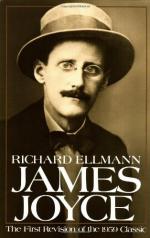|
This section contains 5,840 words (approx. 20 pages at 300 words per page) |

|
SOURCE: Jacobs, Joshua. “Joyce's Epiphanic Mode: Material Language and the Representation of Sexuality in Stephen Hero and Portrait.” Twentieth Century Literature 46, no. 1 (spring 2000): 20-33.
In the essay below, Jacobs investigates the ways in which Joyce's shorter works, especially his manuscript fragments known as the Epiphanies, influence his later, more mature fiction.
James Joyce's transformations of themes, language, and characters from one of his own works to another have long been among the signal preoccupations of Joyce's readers. The manuscript fragments known as epiphanies, written in the years 1900 to 1903, are the earliest sources of specific scenes and more general interests which we can see Joyce draw upon in all his longer works of fiction.1 While Joyce's theorization and use of epiphany from Stephen Hero onward have been central to many readers' understandings of his work as a whole, the connection of this general aspect of Joyce's work to the...
|
This section contains 5,840 words (approx. 20 pages at 300 words per page) |

|


